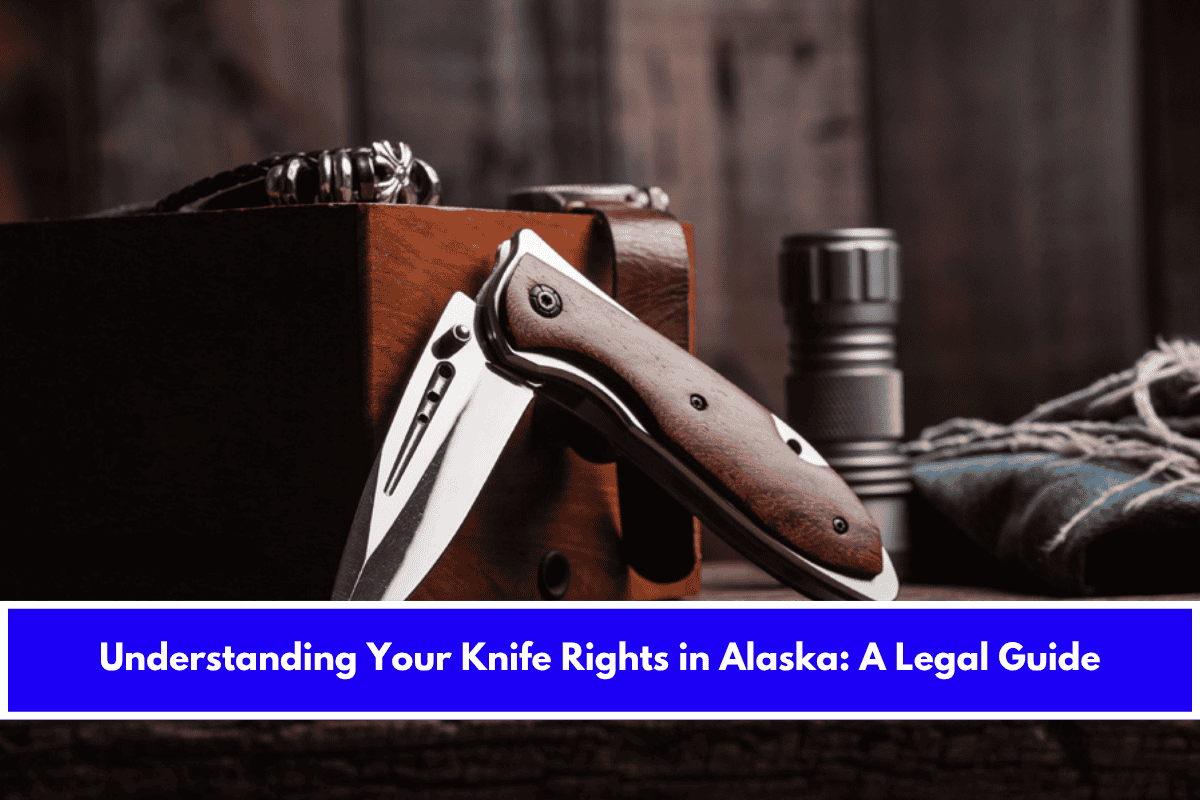Alaska’s knife laws are among the most permissive in the United States, reflecting the state’s rugged environment and emphasis on self-reliance. However, understanding the specifics is essential to ensure you stay within legal boundaries.
Open Carry: Wide Freedom
- No Blade Length Restrictions: Alaska law allows the open carry of any type of knife—including pocket knives, folding blades, and fixed blade knives—without restrictions on blade length. This also includes unique styles like ring knives.
- No Permit Needed: You do not need a permit to openly carry a knife in public places.
Concealed Carry: Generous but With Limits
- Age Requirement: Individuals aged 21 and older may carry knives concealed, regardless of blade length. There is an exception for those under 21, who are prohibited from carrying concealed gravity or switchblade knives.
- Declaration Requirement: If contacted by law enforcement or entering another person’s residence, you must declare any concealed deadly weapon, except for ordinary pocket knives.
- No Length Limit: There is no specific blade length restriction for concealed knives for adults.
Types of Knives Allowed
- Most Knives Permitted: Nearly all types of knives—including switchblades, gravity knives, and assisted-opening knives—are legal to own and carry for adults.
- Minors: Those under 18 may only purchase a switchblade or gravity knife with written parental consent.
Restricted Areas and Exceptions
- Schools and Government Buildings: Carrying knives on school grounds or in certain government buildings is prohibited unless authorized by the appropriate official.
- Law Enforcement and Military: Exempt from many restrictions while on duty.
Local Ordinances and State Preemption
- Statewide Preemption: Alaska law generally overrides local ordinances regarding knife possession and carry. This means state law takes precedence over city or municipal regulations.
- Exceptions: Local governments may restrict possession in municipal government buildings and control where knives may be sold, but cannot impose stricter general carry laws than the state.
Self-Defense and Castle Doctrine
- Castle Doctrine and Stand Your Ground: Alaska is a Castle Doctrine state with a “stand your ground” law, allowing individuals to use deadly force, including knives, in self-defense at their residence or workplace without a duty to retreat if faced with imminent danger.
- Provocation: However, if you provoke a confrontation, you may lose protection under these laws.
Penalties and Enforcement
- Violations: Penalties for violating knife laws range from fines up to $10,000 to imprisonment, depending on the offense (e.g., carrying in restricted areas or with criminal intent).
- Criminal Intent: Carrying a knife with the intent to harm someone can lead to criminal charges, regardless of whether it is openly or concealed.
Summary Table
| Aspect | Alaska Law Summary |
|---|---|
| Open Carry | Any knife, no blade length restriction |
| Concealed Carry | Age 21+, no blade length restriction |
| Switchblades/Gravity | Legal for adults, minors need parental consent |
| Restricted Areas | Schools, government buildings (except authorized) |
| State Preemption | State law overrides local ordinances |
| Self-Defense | Castle Doctrine and Stand Your Ground apply |
| Penalties | Fines up to $10,000, imprisonment for violations |
Key Takeaways
- Adults can openly or concealed carry most knives without restriction.
- Minors face some limitations, especially with switchblades and gravity knives.
- No blade length restrictions exist for open or concealed carry.
- State law generally overrides local regulations.
- Self-defense with a knife is protected under Alaska’s Castle Doctrine.
Understanding these rights and responsibilities will help you safely and legally navigate Alaska’s knife laws.
Sources:
- https://edc.ninja/alaska-knife-laws/
- https://knifeade.com/alaska-knife-law/
- https://katanzo.us/katana-laws-in-alaska/
- https://nobliecustomknives.com/us-knife-laws/alaska-knife-laws/











Leave a Reply